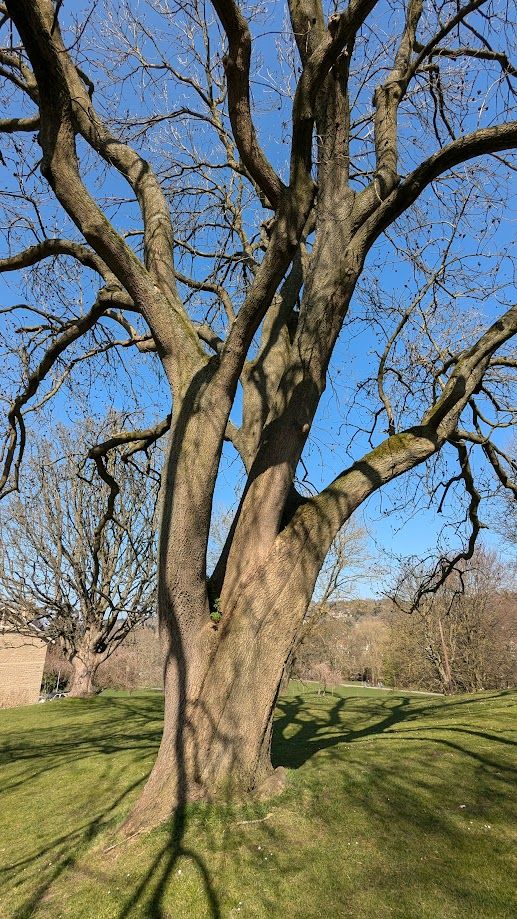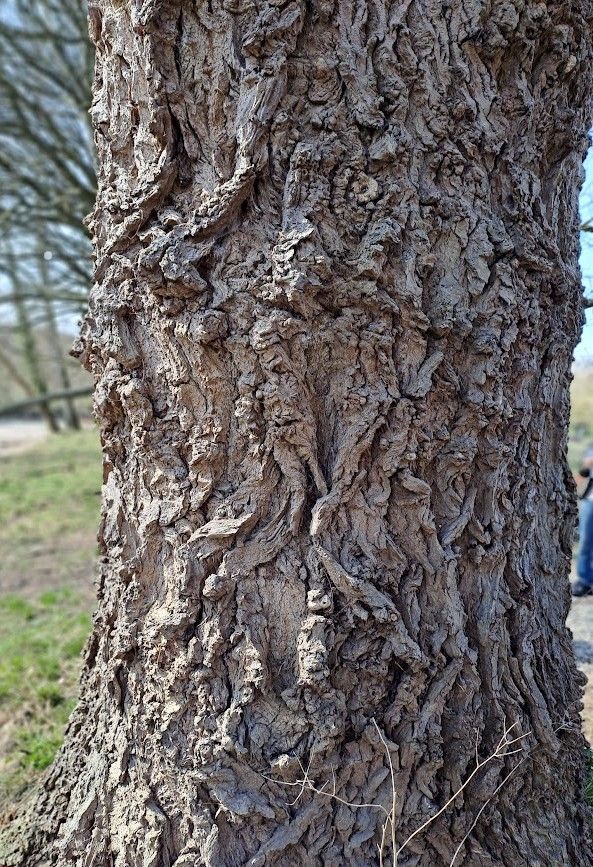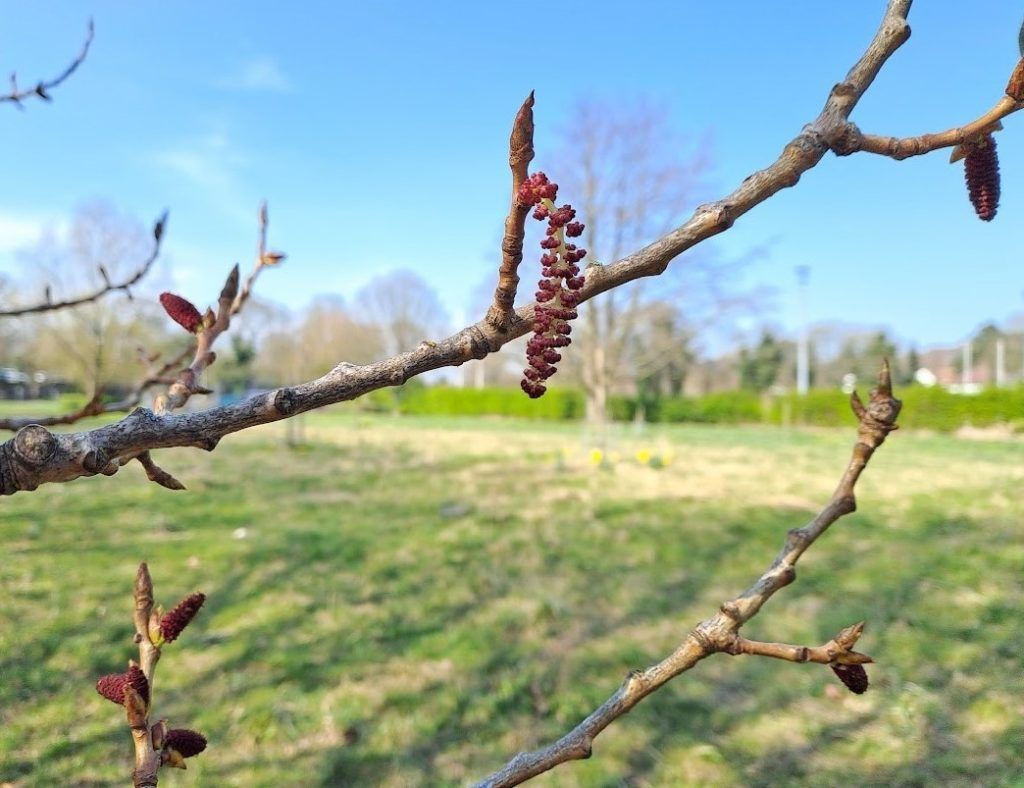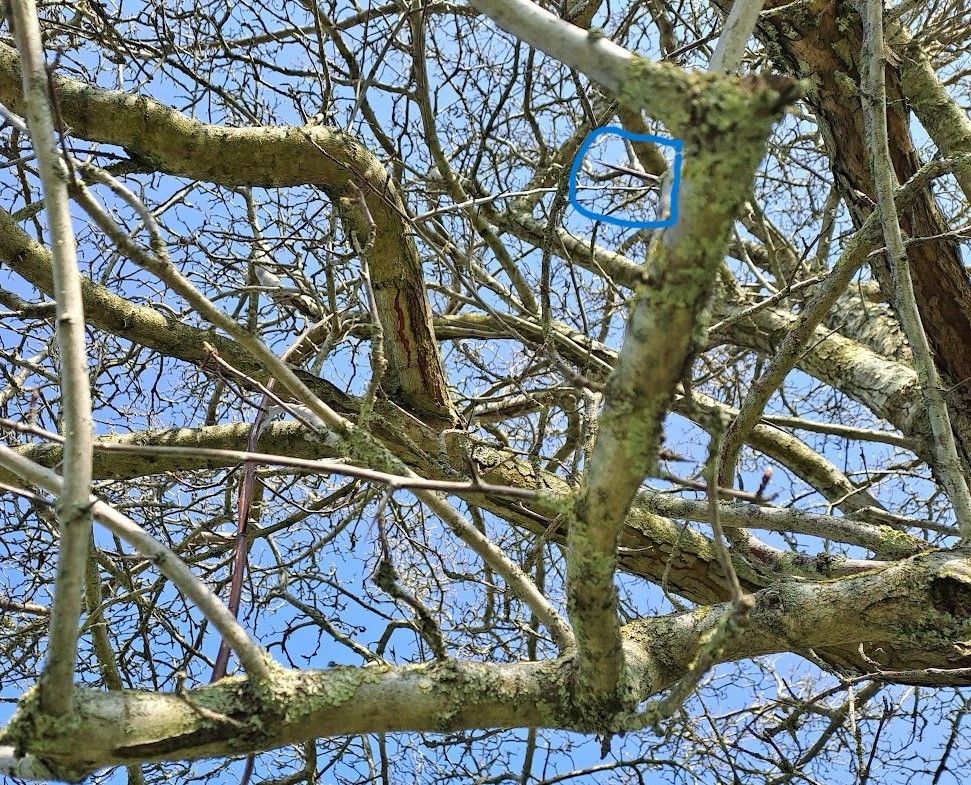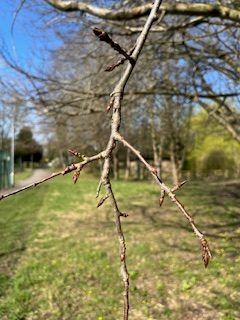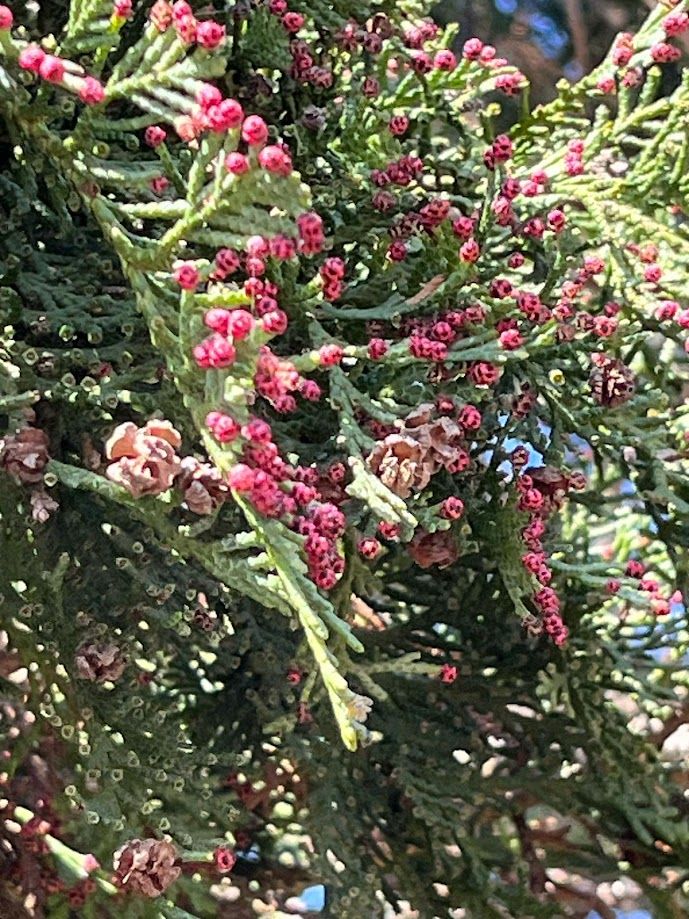Any visitor to Ilkley, with an interest in tree species, can now chose from six very well documented and illustrated Tree Trails. These trails are available as booklets, or can be downloaded to a mobile and/or printed out. The trails are very well written, with extra information added wherever possible together with a map to follow.
For this first meeting in Ilkley we chose to follow the ‘Introduction to Trees ‘. Again we were lucky with a warm, sunny morning to follow this trail which visits 40 trees in area of the Manor House, East Holmes Field and the Lido. The trail starts at Manor House, an impressive Grade 1 building, dating from 1390, that stands on the remains of a Roman fort (photo 1). Manor House is open at weekends. Inside is a museum, an art gallery and exhibitions space. Standing nearby is an impressive big Ash thought to be over 100 years old. A close look shows its 3 trunks entwined, suggesting it was damaged or pollarded in the past.
You will see, from the attached tree list and map, that there a number of quite common species such as Yew, Downy Birch, and Sycamore growing in the open spaces either side of the river. Also a good variety of conifers can be found,along with some species that are known to be ‘good street trees’ such as Silver Pendant Lime. As we were still in the first weeks of April only a few broad-leaved trees had breaking buds. However a highlight of our walk around proved to be the clear view of the different outlines of these different species and their bark. Each tree that we stopped at had points of interest that we discussed, and often found extra interesting information from Colllins Tree Guide.
Below are highlights of just 7 of the 40 species mapped on this trail.
1. Bark -The species with that would win the most ‘Impressive Bark ‘competition would be the Black Poplar, no. 18 on the map. There are 4 of these Black Poplars, thought to be over 100 years old, close together on the bank of the River Wharfe, towering over other species. This species is dioecious and these 4 can be identified as male trees by their distinctive red catkins (photo 4). The Woodland Trust estimates that, of the approx 7000 Black Poplars still growing in UK only 600 are female trees, ID green catkins. Hence this species is becoming one of our most endangered native trees.
2. Height -The species that would take first place for its stature, sheer height, would be the Black Pine, no 35, growing in a private garden. Matt’s photo gives you an idea its height. Luckily, on the pavement below were a few cones and plenty of very long pairs of needles to confirm the ID.
3. Leaf size – The broad-leaved tree with the largest leaves would be the Red Oak, no 21.
4. Thorns – At first glance the Broad-leaved Cockspur Thorn, no 25, looks deceptively harmless. This species is a member of the Hawthorn family, and a closer look at its branches reveals thorns as long a cocktail sticks! An effective deterrent against hungry herbivores!
5. Buds – The Aspen just wins this competition for ‘Sharp Buds’ from the Black Poplar, see Sheila’s photo. Collins Tree Guide describes these buds as ‘painfully sharp’. Sharp buds are characteristic of the Poplar family, and that the species in this family are dioecious.
6. ‘Flowers’ to surprise – Lawson cypress. In early spring male and female flowers develop on its drooping twigs. In Sheila Nash’s photo you see these lovely bright red tips that are the male flowers. Later it should be possible to see the pale yellowy green female flowers growing below each of these red male flowers.
7. Fragrance – Western Red Cedar, no 28, crush the glossy, flattened foliage of this conifer and a strong, sweet smell of pineapple will be released, a feature notable enough to be used for its ID.
We are grateful to those who contributed to the publishing of such useful trails.
Kerry Morrison

